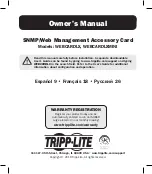
DRA-2 UNIVERSAL COMMUNICATION NODE
88/158
USER GUIDE - Rev.5 (January 2018)
•
DPD Maxfail.
The value of this parameter is the maximum admitted number of
failures to respond to a Hello message. If this maximum number is reached it is
considered that the tunnel is not available and an attempt will be made to restore it.
•
DPD Reverse Initiator-Responder.
This option allows the use of the DPD
supervision service with tunnels ended by Cisco equipment that execute a non-
standard variation.
IKE Policies.
•
Profile name.
This identifies the set of parameters being configured to establish an
IKE Security association
, so that it can be used by one or more configured tunnels.
•
Use fqdn (Full Qualified Domain Name
). This indicates the type of identification
to be used by the equipment. The options are
disabled,
entailing the use of the IP
address,
fqdn
, which involves using a domain (e.g. foo.domain.com), or
user_fqdn
, entailing the use of an e-mail address (e.g. [email protected]).
•
fqdn value.
This parameter determines the domain or e-mail address to be used
after selecting one of the two options indicated in the preceding section.
•
Passive.
When this option is executed, the equipment will not take the initiative in
establishing the tunnel and wait to receive the request from the remote end.
•
Exchange Mode.
This establishes the mode for exchanging codes. The mode
must be the same at both ends for the exchange to be successful. The options are
main
,
aggressive
and
base.
•
Cipher alg. Cipher alg.
This determines the cipher algorithm to be used for
exchanging codes. The available algorithms are
DES
,
3DES
and
AES
.
•
Hash Alg.
This determines the hash algorithm used for authentication during the
code exchange. The available options are
MD5
(Message Digest 5) and
SHA1
(Secure Hash Algorithm).
•
Auth. Method.
This establishes the code-generating mechanism. Only the
exchange of previously-established codes is available as a method.
•
DH Group.
Selection of the Diffie-Hellman (DH) Modular Exponential (MODP)
group for creating codes. Group 1 (768 bits, option
modp768
), group 2 (1024 bits,
option
modp1024
) and group 5 (1536 bits, option
modp1536
) are available.
•
Lifetime.
The valid term for the security association in exchanging codes. When
the established time is up, a new association is renegotiated. The value establishes
the time in seconds.
•
Enable.
This indicates that the group of parameters specified can be used (active
option) or that it cannot be used (inactive option).
















































